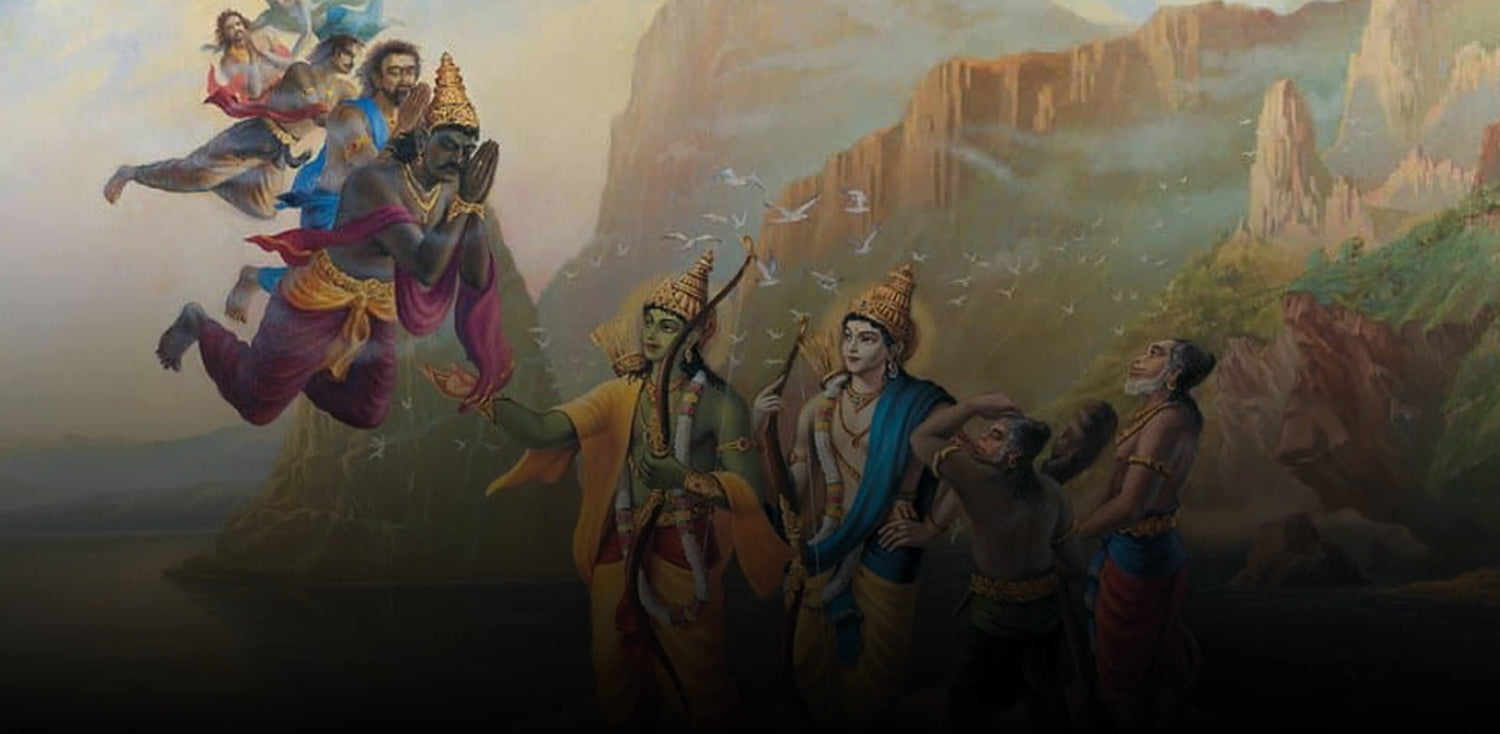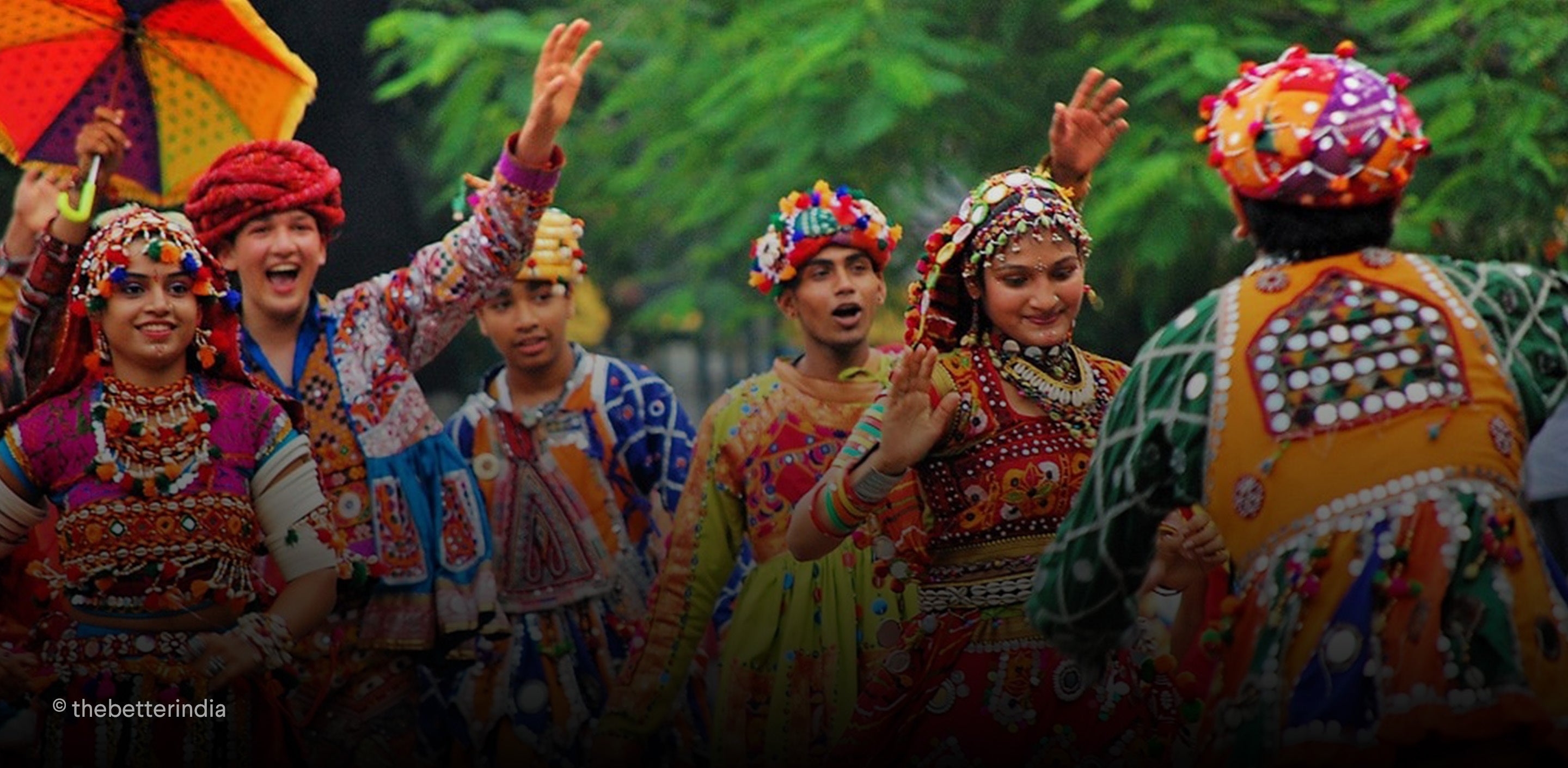India has a long and illustrious history in the textile industry, dating back to ancient times. Evidence of wild indigenous silk caterpillar species from Harappa and Chanhudaro supports the usage of silk as early as the middle of the third millennium BCE. Further, Mesolithic cave paintings portraying waist garments provide more evidence of textile manufacturing and use. However, do you know the journey of Indian textiles is much older than these evidence?
Unfortunately, none of ancient India's textile manufacturing wealth has survived, but this dearth of tangible evidence is partially counterbalanced by an enormous number of archaeological discoveries and literary references. First, from the Vedic era (1500–800 BCE), we receive references to fabrics and the decorum of clothing, which indicate the advancements in the textile period of ancient India.
Sita's trousseau included cotton garments, furs, valuable stones, magnificent silk vestments of multiple colors, royal jewelry, and splendid carriages of many sorts, as described in Valmiki's Ramayana (5th/6th–3rd century CE). There are many references to veils, bodices, and other forms of body clothing throughout both the Ramayana and the Mahabharata. Both the bride and the groom wore upper and lower robes made of silk with swan designs woven all over them on their wedding day. Throughout the Ramayana, printed fabric makes several appearances. Gifts of patterned carpets, blankets, and costumes were sent to the women of Ravana, who donned them lovingly.

However, today we are not just going to discuss the Indian textile as glorious history but also focus on the spiritual part of these fabrics through the perspective of Ramayana and how Valmiki uses the textile to describe the different phases of life. Something to keep in mind when you create your diwali outfits with your story and interpretation not just for the trends and fashion but for your soul.
Silk

The Ramayana describes silk as both- the luxurious garments of the nobility and the humble garb of the ordinary people. In the Ramayana, there are various places that describe the silk as' Kausheya’. A few verses on Sita wearing Kausheyam from Aranya Kaand are here:

This describes how Sita was wearing silk during the abduction. Not just sita, but Kausalya, who wished to keep her religious vows on a regular basis, dressed intriguingly in a white silk sari and sang Vedic hymns while executing a sacrifice rite in front of a holy fire. As described in Sundar Kaand, even Ravan used to wear silk of high quality.
Silk does not symbolize the royalty and luxuriousness of life alone, but the essence of purity. Silk is a Sattva-Raja-dominating fabric. The Raja factor is responsible for the luster. Only because silk is a sattvik material are the wearer's energy fields shielded by the waves it emits. You can adopt this fabric for a Diwali outfit to dominate your Satvik side. And if you are a newly wedded couple, then wearing silk attire during the Diwali Pooja would increase your Satvik and protect you from negative energy.
Linen

The linen of ancient India was revered for its beauty, sanctity, fineness, softness, and regal insignia, and it is mentioned several times in the Vedas, Puranas, and Upanishads, as well as in other sacred texts. In the Ramayana, linen is described as ‘ksauma’ which means a fiber from the bark of linseed. Dukula represents high quality linen during ancient times, which is also described in the Ramayana. Throughout the ancient era, linen was used to prepare splendid costumes for regal and wealthier people. The immorality and spiritual significance of linen could be understood by its description as a fiber of healing in the Indian ethos.
Apart from its physical benefits, this material is complementary to human cells and benefits the human body. Further, this fabric is also ceremonial fabric as evident from Ramayana. The queens of Dasaratha greeted their sons' wives and escorted them to the temple while dressed in linen. Rama wore linen on the day of his planned coronation as Prince of Ayodhya.
Queen Kausalya and the palace courtesans wore linen for events. At his cremation, King Rawana's corpse was draped in linen. Linen was used almost everywhere, from birth to death, throughout that era.
Cotton

To express the cotton material, the phrase ‘karpasa’ was used in the Ramayana. In Valmiki’s ramayanas, there were many incidents where cotton fabric was mentioned as a soft material. One can be witnessed from Kishkindha Kaand, where a verse is used to describe clouds as soft as cotton fabric:

Second, cotton was mentioned in Sundara Kaand, where Ravan and a demon tried to set fire to Hanuman’s tail. They used cotton material to wrap around the tail and soaked it in oil.
Apart from this, during the exile period, Rama, Sita, and Lakshmana also used to wear cotton clothes. But in Ramayana, cotton clothes were not detached with social class then why did they wear it? The reason behind was some amazing qualities of cotton material. It's symbolic of wealth and well-being and cherishing those around you. In our culture, cotton is seen as a pure material. When you wear cotton, your skin stays healthy and radiant because the fabric quickly absorbs any perspiration. When Rama, Sita, and Lakshamana were in the forest, they must have faced difficulties, and to be relaxed, they chose to wear cotton clothes.
Printed And Embellished Clothes

Art of hand-painted fabric is said to date back to the era of Ramayana. It is evident when King Janaka instructs an artist to capture his daughter’s marriage on fabric. From the literature reference, it can be said that this hand painting craft belongs to Bihar region’s folk art, Mithila or Madhubani, that is still practiced by local craftsmen.
Not just Sita, but Ramayana mentioned embellished clothes worn by Ravana. The Valmiki clearly explained that Ravana was adorned in silk fabric that had gold-colored embroidery. We can also witness the same in Sundar Kaand when Hanuman ji described Lanka as a beautiful city where the palace of Ravana is furnished with several types of fabrics that are embellished with mirror work and hand painting. We can see that even during the ancient period, printed clothes and embellished fabric were used to decorate the home as well as for special events. Does this spark an idea with hand painted fabrics for your own home?
Conclusion
Cotton, silk, and linen fabric are not just laden with qualities and benefits but also depict our cultural as well as religious values. So this festive season, be it Diwali or Dussehra do not just go for trendy and fashionable clothes but celebrate the victory of good over evil with fabrics of much more significance & royalty.
We also happen to be a magnet for suggestions, and would love to catch yours….throw us yours on hello@fabriclore.com




